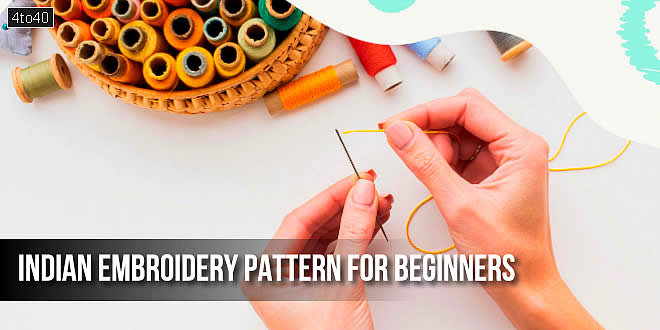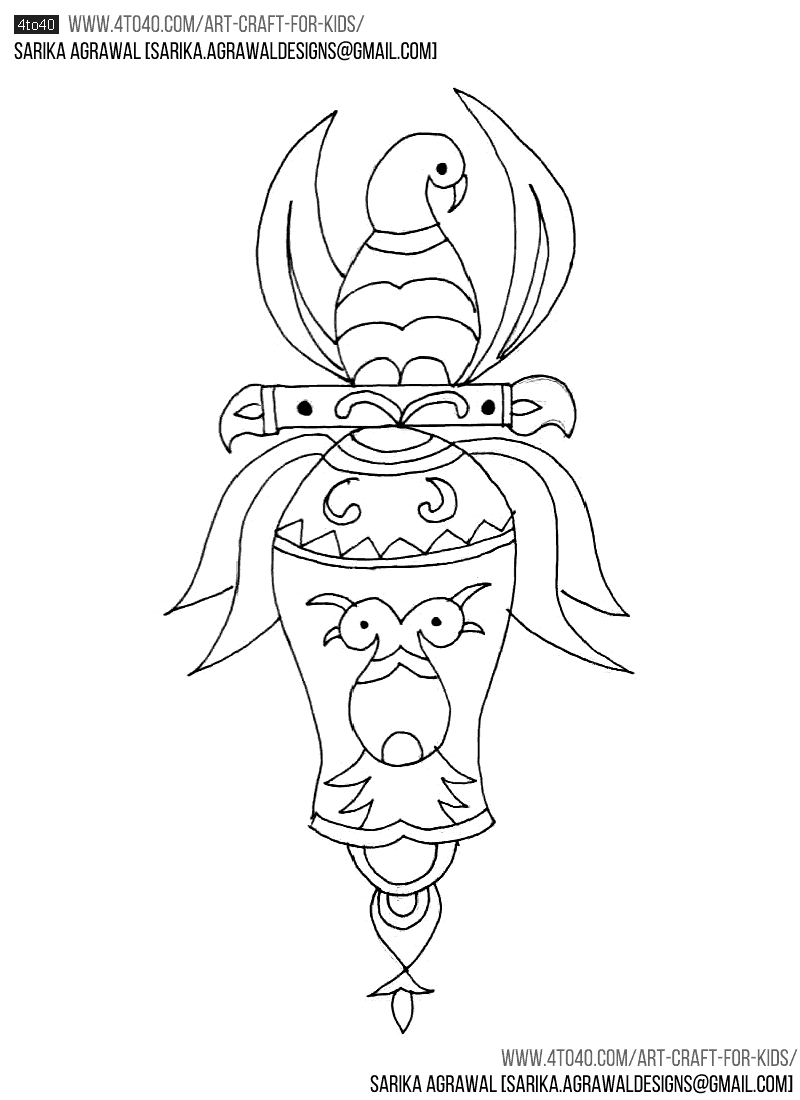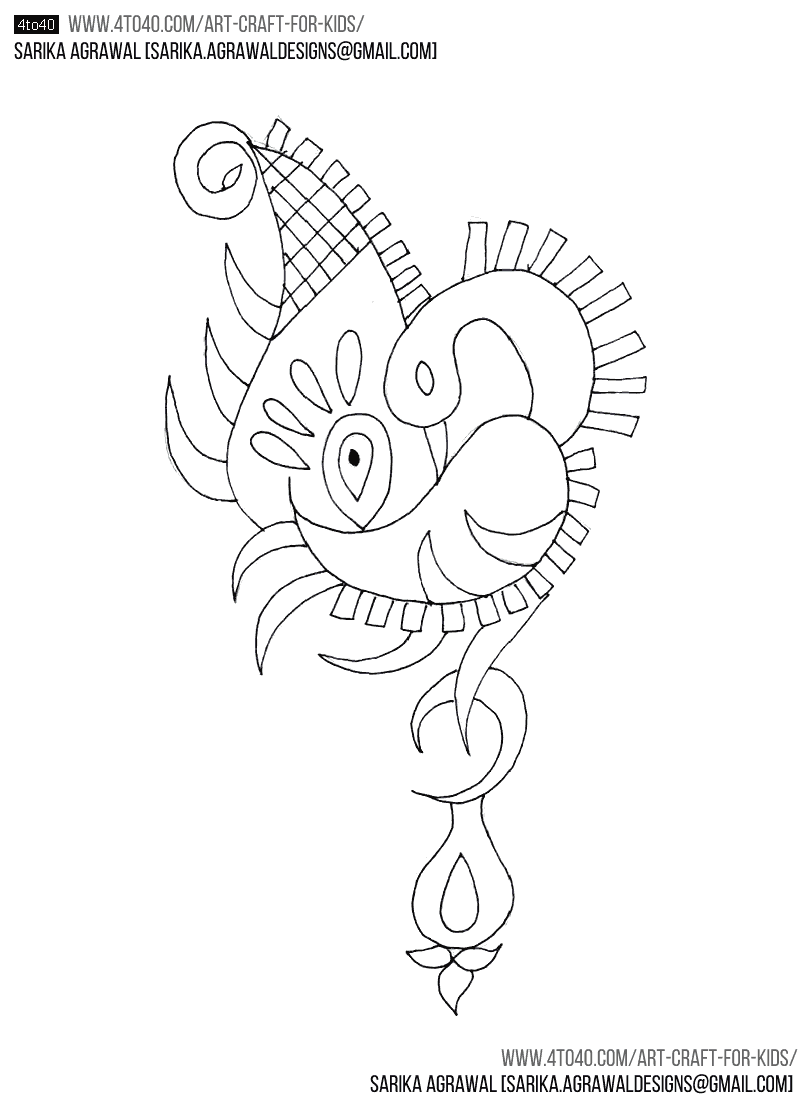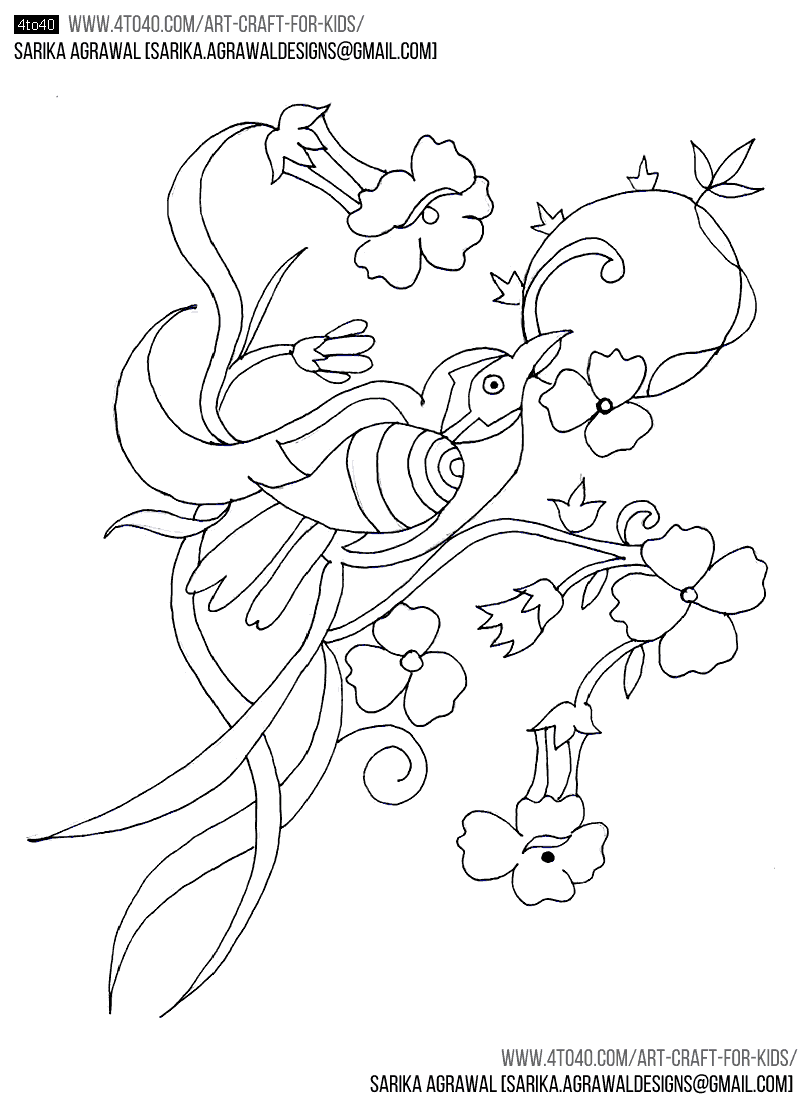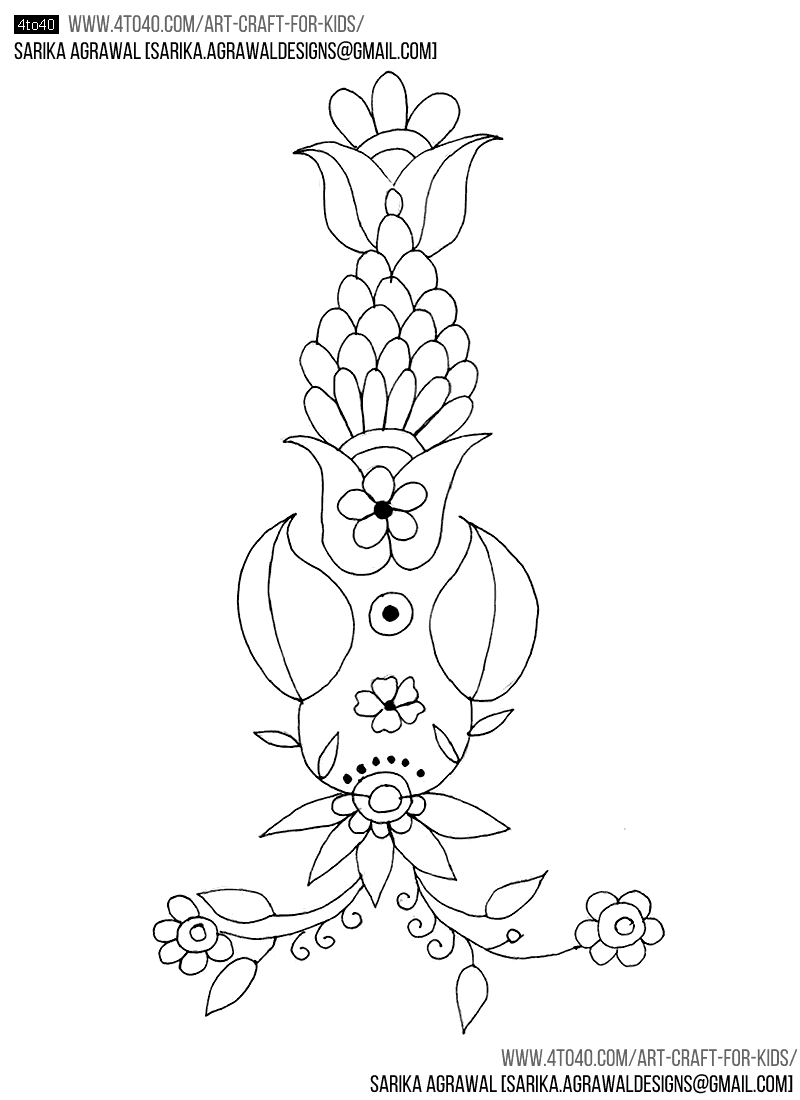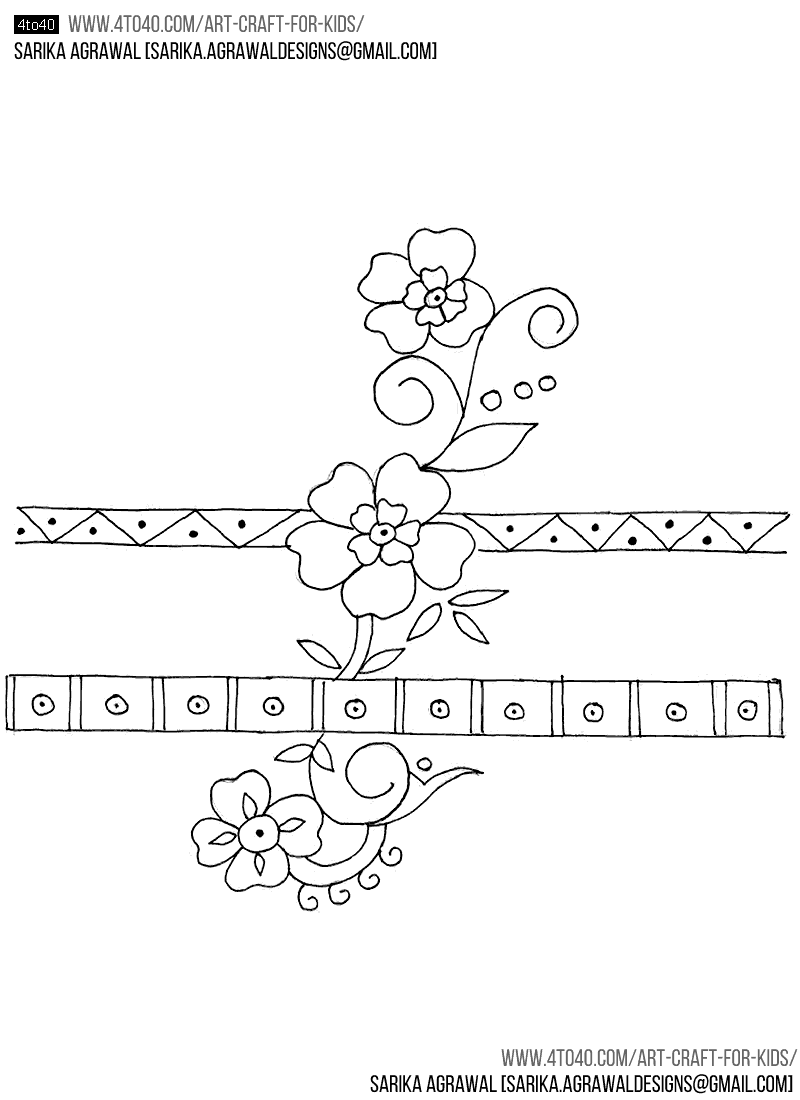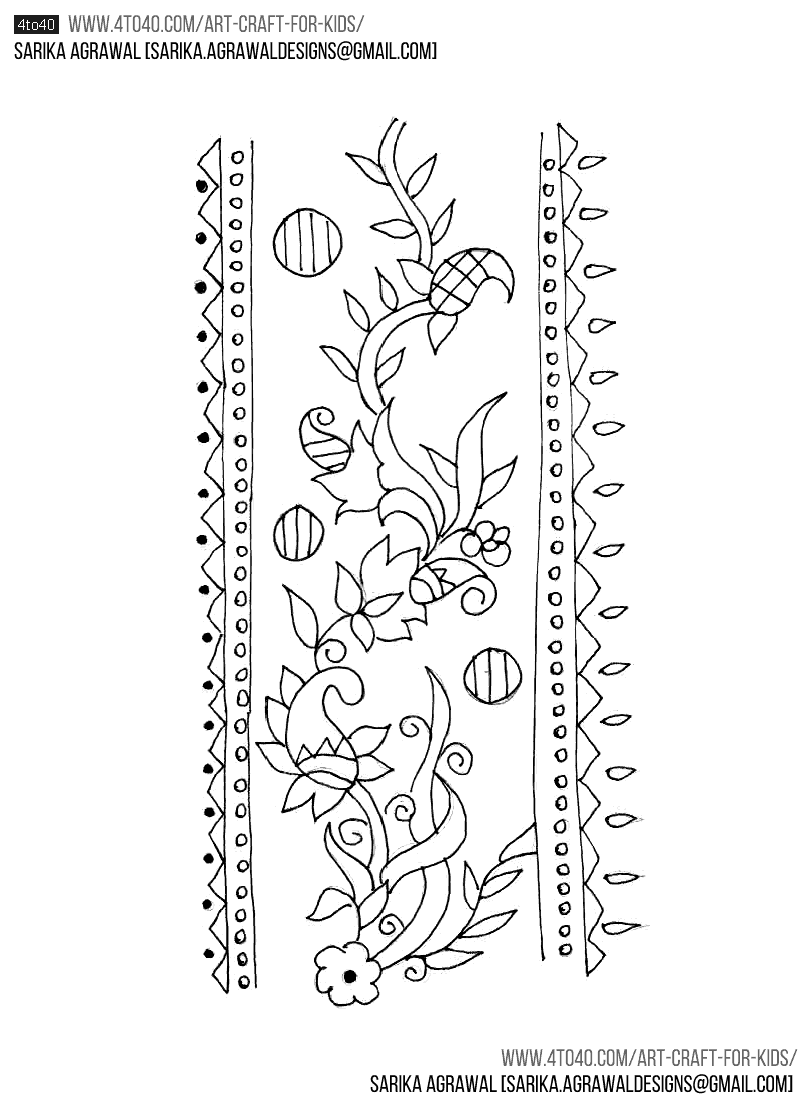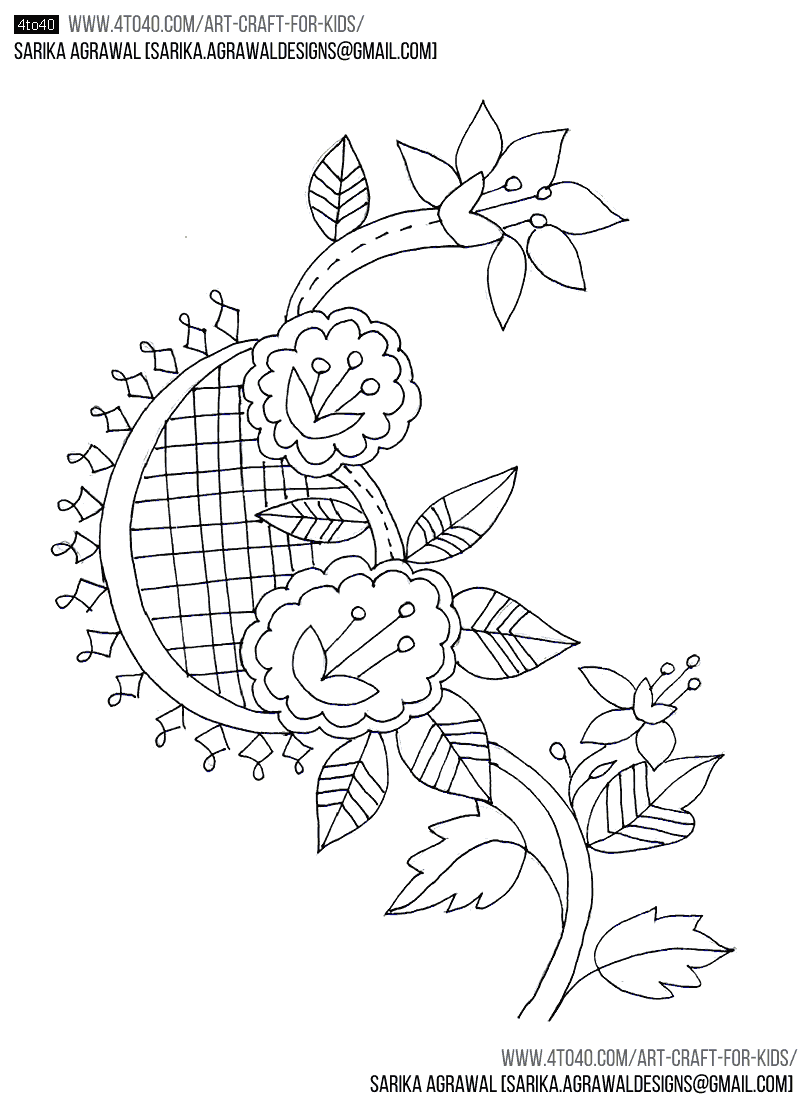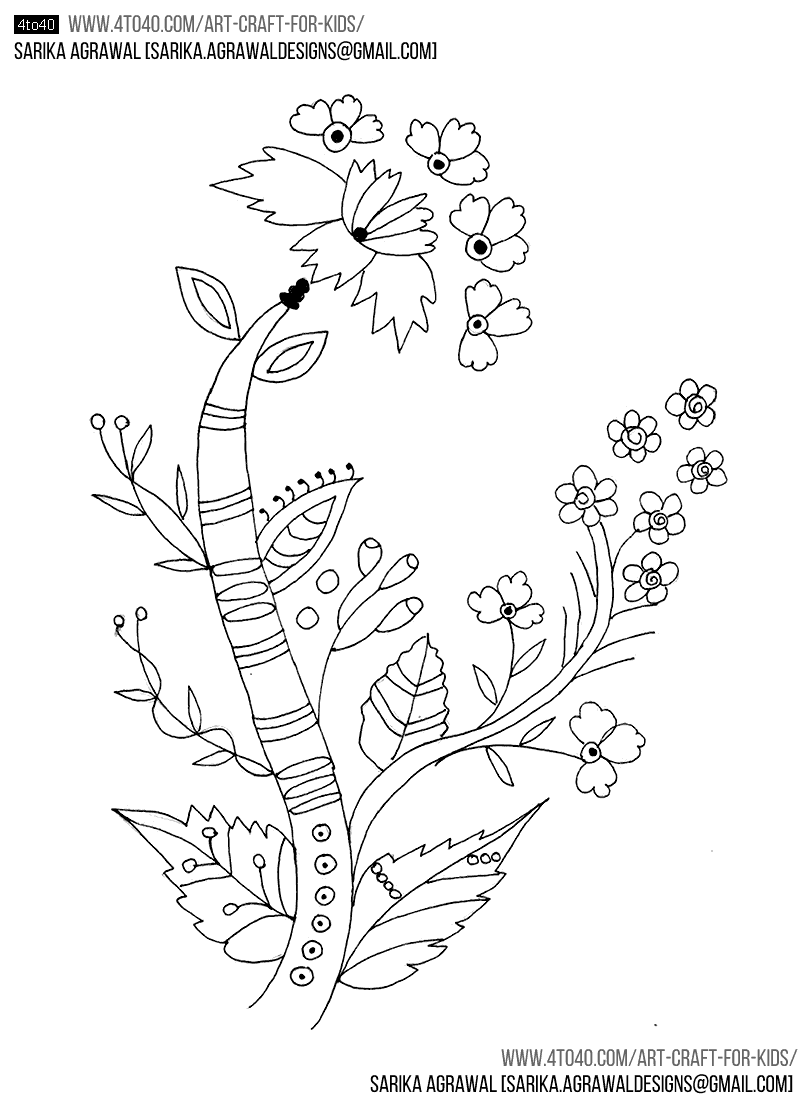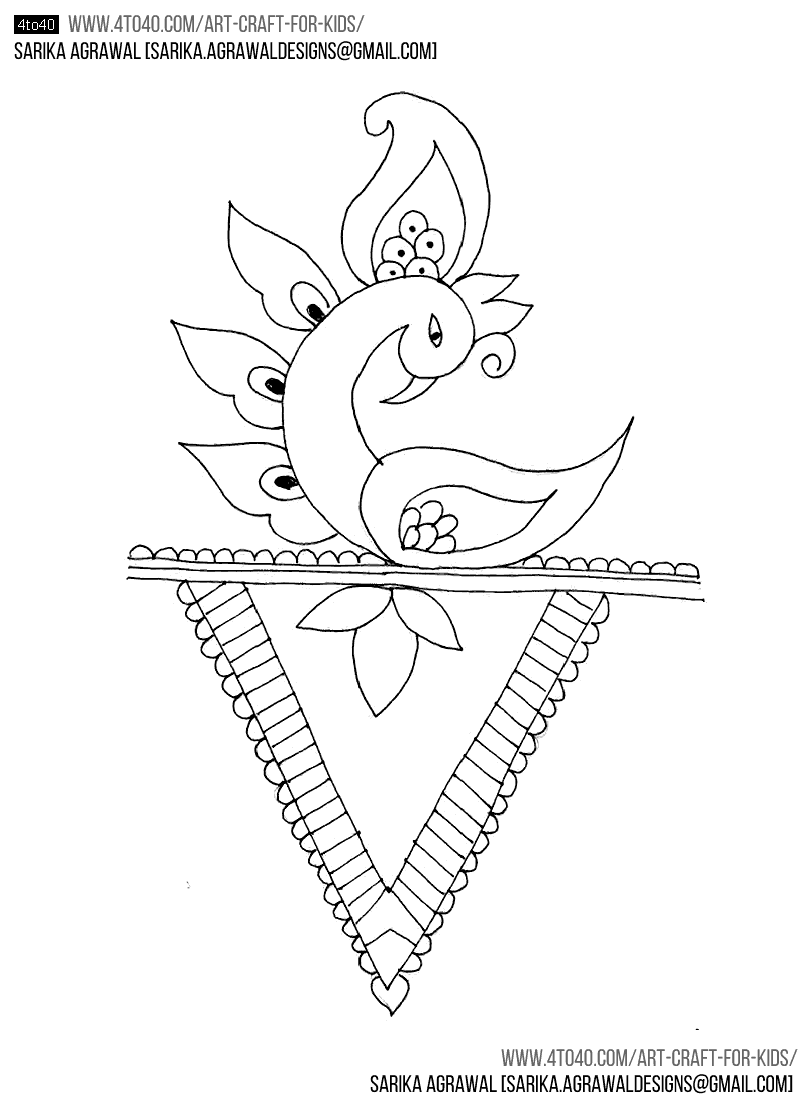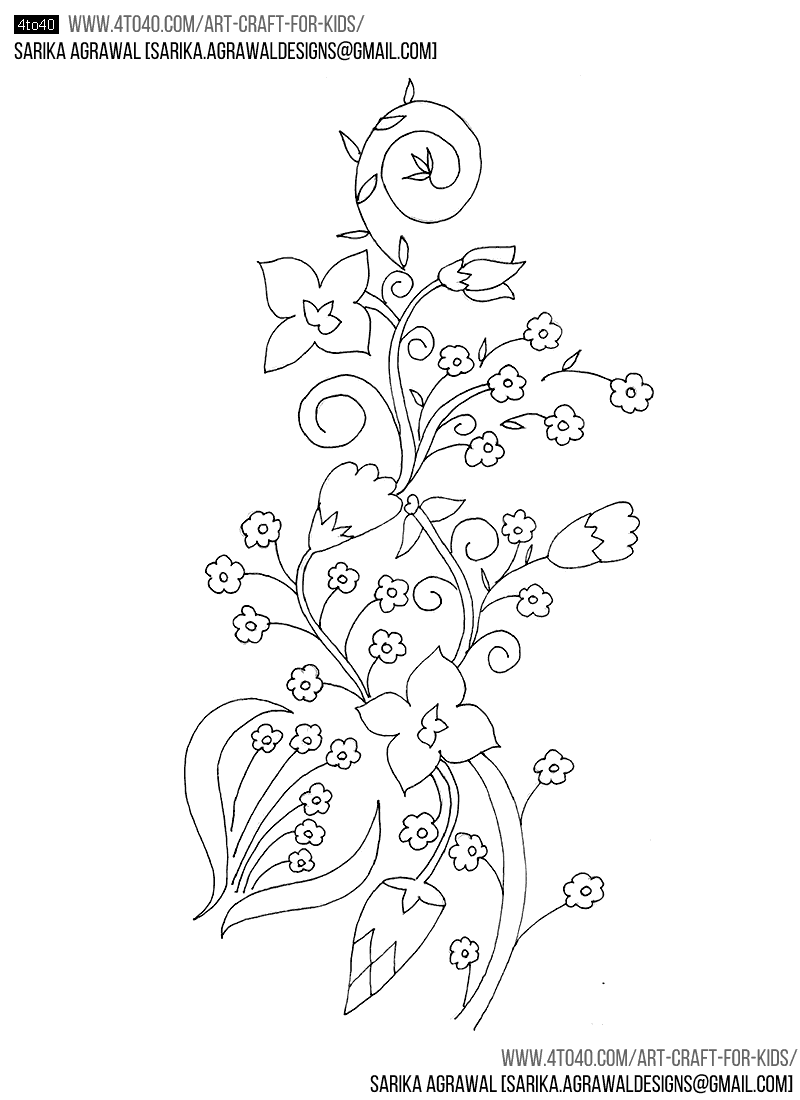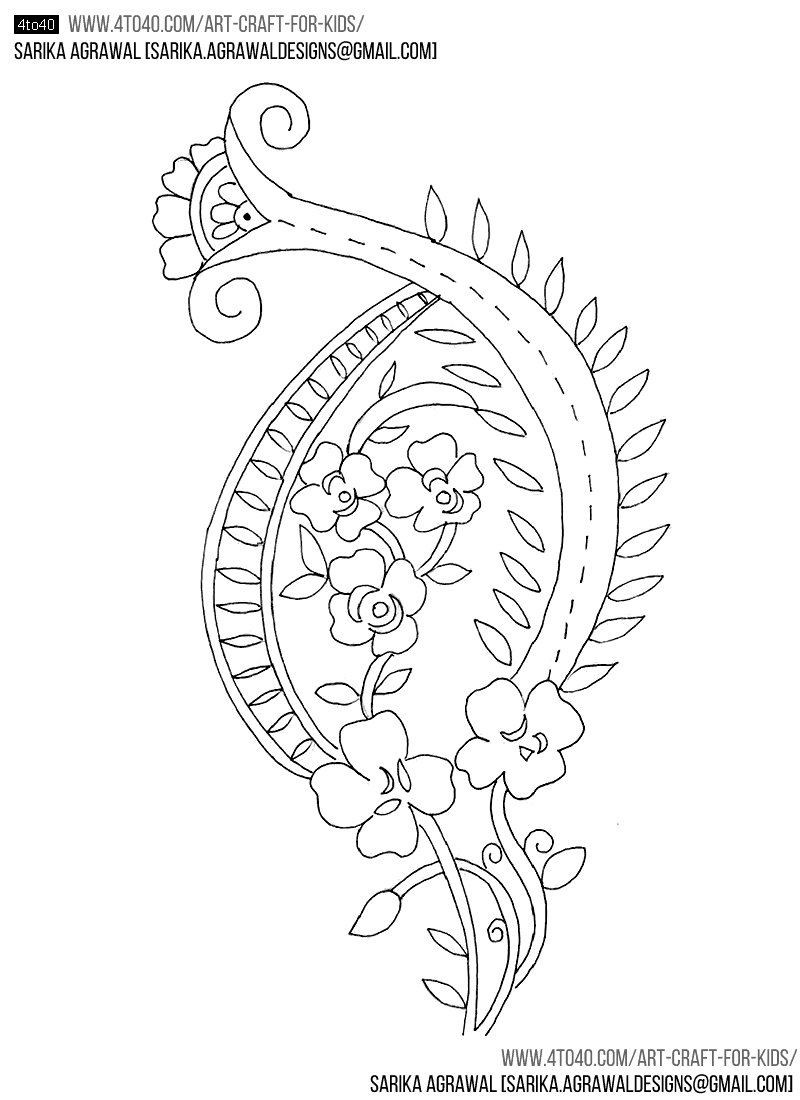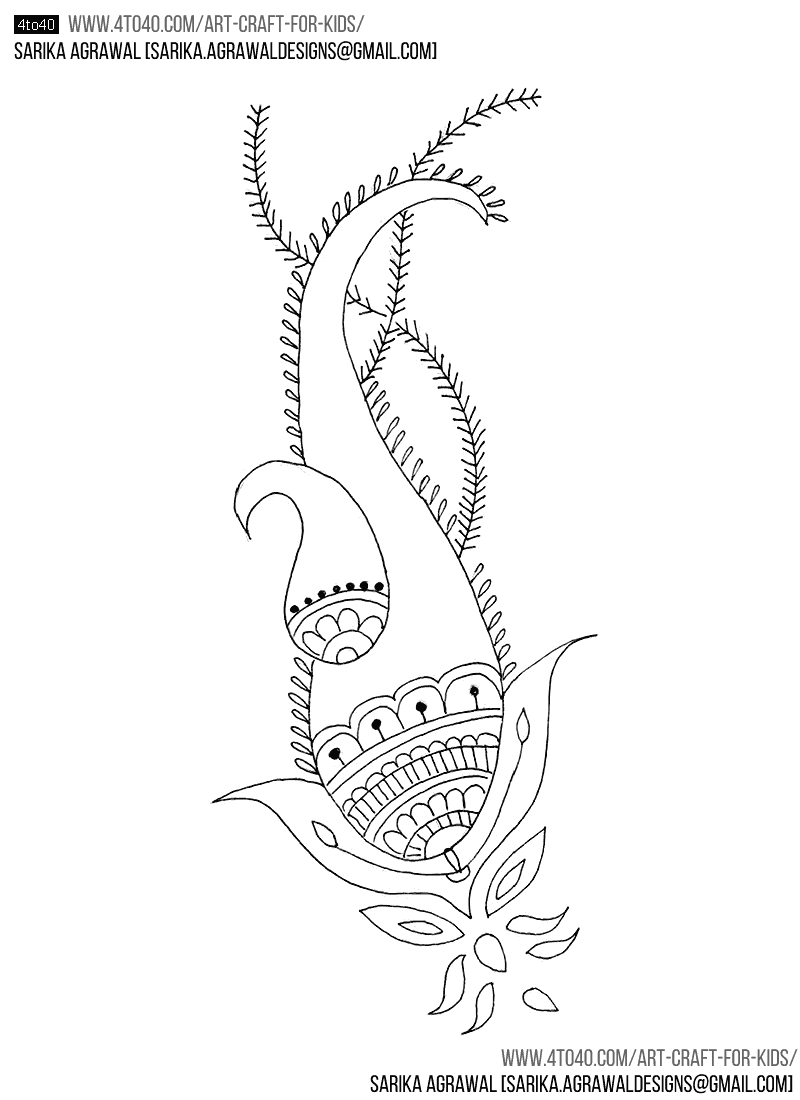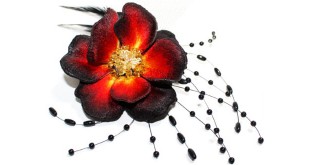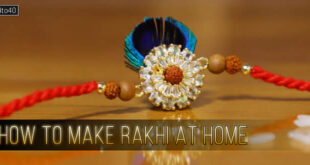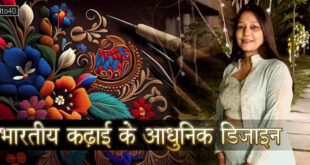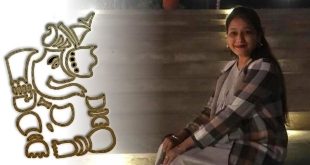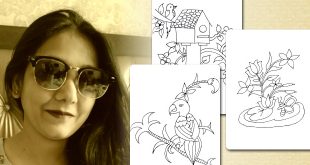Indian Embroidery Pattern For Beginners: Embroidery in India includes dozens of embroidery styles that vary by region and clothing styles. Designs in Indian embroidery are formed on the basis of the texture and the design of the fabric and the stitch. The dot and the alternate dot, the circle, the square, the triangle, and permutations and combinations of these constitute the design.
Indian Embroidery Pattern For Beginners
Aari Work: Indian Embroidery Pattern For Beginners
Aari work involves a hook, plied from the top but fed by silk thread from below with the material spread out on a frame. This movement creates loops, and repeats of these lead to a line of chain stitches. The fabric is stretched on a frame and stitching is done with a long needle ending with a hook such as a crewel, tambour (a needle similar to a very fine crochet hook but with a sharp point) or Luneville work. The other hand feeds the thread from the underside, and the hook brings it up, making a chain stitch, but it is much quicker than chainstitch done in the usual way: looks like machine-made and can also be embellished with sequins and beads – which are kept on the right side, and the needle goes inside their holes before plunging below, thus securing them to the fabric.there are many types of materials used like zari threads, embellishments,sequins etc..
Aari embroidery is practiced in various regions such as in Kashmir and Kutch (Gujarat).
Banjara Embroidery:
Practiced by the Lambada gypsy tribes of Andhra Pradesh, Banjara embroidery is a mix of applique with mirrors and beadwork. Bright red, yellow, black and white coloured cloth is laid in bands and joined with a white criss-cross stitch. The Banjaras of Madhya Pradesh who are found in the districts of Malwa and Nimar have their own style of embroidery where designs are created according to the weave of the cloth, and the textured effect is achieved by varying colours and stitches of the geometric patterns and designs. Motifs are generally highlighted by cross-stitch.
Heer Bharat or Banni (Gujarat):
The Heer Bharat or Banni embroidery originates in Gujarat, and is practiced mainly by the Lohana community. It is done with silk floss (Heer means “silk floss”) and it is famous for its vibrancy and richness in color pallets & design patterns, which include shisha (mirror) work. Bagh and phulkari embroidery of the Punjab region has influenced Heer Bharat embroidery in its use of geometrical motifs and stitchery.
Chamba Rumal (Himachal Pradesh):
It originated in Chamba kingdom of Himachal Pradesh in 17th century. This embroidery flourished in the princely hill states of Kangra, Chamba, Basholi, and other neighbouring provinces. The Chamba region has highly skilled craftsmen. Chamba embroidery has its own distinctive style, small squares or rectangles of cloth embroidered with untwisted silk threads. While untwisted silk is most common some Chamba embroidery make use of thin metal wires or metallic yarn. While the chamba rumal originated in the 17th century it reached widespread popularity in the 18th century after rulers in the Himalayan region patronized Chamba Rumal embroiderers. The original Chamba embroideries were done by women or young children, the embroideries often depicted gods or goddesses. Original Chamba embroideries were very important in marriages as the embroideries were kept as the brides dowry. Chamba embroideries often began by drawing an outline on the rectangular square of fabric, while originally embroidered by women at the height of popularity in the 18th century many male painters drew the outlines and embroidered the clothe themselves to ensure high quality work. Not long after its height of popularity in the 18th century the chamba rumal’s popularity declined. The rumals began to lose their sacredness, today most rumals are made by families trying to sell them to survive, and the Chamba Rumals are not of the same quality as they were in the 17th and 18th century. While this art style has declined over the years and almost been lost, in 2009 Lalita Vakil was given the Shilp Guru award for her ability and skill in Chamba embroidery.
Chikankari (Uttar Pradesh):
The present form of chikan (meaning elegant patterns on fabric) work is associated with the city of Lucknow, in Uttar Pradesh. Chikan embroidery on silk is Lucknow’s own innovation. The other chikan styles are that of Calcutta and Dacca. However, characteristic forms of stitch were developed in Lucknow: phanda and murri.
Chikan embroidery is believed to have been introduced by Nur Jahan, the wife of Jahangir. Chikan embroidery involves the use of white thread on white muslin (tanzeb), fine cotton (mulmul), or voile, fine almost sheer fabrics which showcases shadow work embroidery the best. Other colours can also be used.
The artisans usually create individual motifs or butis of animals and flowers (rose, lotus, jasmine, creepers). The designs are first printed onto the fabric not with chaulk, but with a mixture of glue and indigo.
At least 40 different stitches are documented, of which about 30 are still practiced today and include flat, raised and embossed stitches, and the open trellis-like jaali work. Some of the stitches that are used in Chikankari work include: taipchi, pechni, pashni, bakhia (ulta bakhia and sidhi bakhia), gitti, jangira, murri, phanda, jaalis etc. In English: chain stitch, buttonhole stitch, French knots and running stitch, shadow work. Another is the khatao (also called khatava or katava).
 Kids Portal For Parents India Kids Network
Kids Portal For Parents India Kids Network
